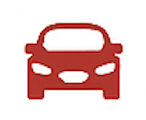Modern Mobility and Motor Enthusiasm in South Korea
A Brief History of South Korea's Automotive Industry
South Korea's automotive industry began in earnest during the 1960s when the government initiated policies to support domestic manufacturing. Initially reliant on assembling foreign vehicles under license, the country gradually developed its own models and brands. By the 1980s, companies like Hyundai and Kia had started exporting cars abroad, rapidly becoming significant players in global markets.
The 1990s marked a period of maturation for South Korea's automotive sector. With growing technological capabilities and strong state support, Korean automakers began innovating and investing in research and development. This decade also saw the creation of robust domestic supply chains, enhancing quality and reducing reliance on imports. As the industry matured, so did the enthusiasm for cars among South Korean consumers.
Car Ownership and Urbanization Trends
Despite South Korea's dense urban environments and advanced public transportation systems, car ownership has continued to rise steadily. In 2023, the country surpassed 25 million registered vehicles, with the vast majority being privately owned passenger cars. This trend highlights both the aspirational value of owning a car and the increasing practicality of car ownership in suburban and rural areas.
Urban centers like Seoul face considerable traffic congestion, prompting the government to implement restrictions such as alternate-day driving and expanded toll systems. Nevertheless, many South Koreans still view car ownership as a sign of status and independence. Younger drivers, in particular, are drawn to compact vehicles that fit the urban lifestyle while older demographics often prefer larger sedans and SUVs.
The Rise of Electric Vehicles and Green Mobility
Electric vehicles (EVs) have gained considerable momentum in South Korea in recent years, aided by government subsidies, a growing network of charging stations, and domestic production of battery technology. Hyundai and Kia have both introduced successful EV models, including the Hyundai Ioniq and Kia EV6, which have been praised for their performance and design.
South Korea's commitment to reducing emissions aligns with its broader Green New Deal, which promotes sustainable mobility. Municipalities across the country are investing in electric buses and hybrid taxis, and new urban developments often include infrastructure for EV charging. This push toward greener transportation reflects both environmental awareness and national pride in technological innovation.
A notable development is the integration of hydrogen fuel cell vehicles, such as the Hyundai NEXO, into the South Korean market. While adoption rates are still modest, South Korea remains one of the few countries actively developing hydrogen vehicle infrastructure, positioning itself as a global leader in alternative fuels.
Motorsports, Car Meets, and Enthusiast Communities
Motorsports have a growing but still relatively niche following in South Korea. The Korea International Circuit in Yeongam hosted Formula 1 races between 2010 and 2013, raising the profile of the sport nationally. Although F1 no longer races in the country, domestic events such as the Superrace Championship attract dedicated fans and talented drivers.
Car meets and enthusiast clubs are particularly popular among younger South Koreans. Enthusiasts gather to showcase tuned vehicles, share technical knowledge, and celebrate a shared passion for automobiles. Tuning culture, which includes custom wheels, LED lighting, and engine modifications, is regulated but vibrant, with local events held in cities like Incheon and Busan.
Online platforms have played a critical role in organizing these communities. Forums, YouTube channels, and social media groups provide spaces for car owners to exchange advice, review aftermarket parts, and document their projects. These digital communities have helped spread car culture beyond Seoul and into the provinces, giving rise to a decentralized but connected automotive scene.
Import Car Market and Luxury Vehicles
While domestic brands dominate the market, imported cars have carved out a notable niche, especially among affluent consumers. German brands like BMW, Mercedes-Benz, and Audi are particularly popular, often viewed as symbols of success and prestige. In 2023, imported vehicles accounted for nearly 20% of new car registrations in South Korea.
Luxury imports face high tariffs and taxes, yet demand remains strong. Many buyers are willing to pay a premium for performance, design, and brand recognition. In recent years, electric luxury vehicles such as the Tesla Model S and Porsche Taycan have also gained traction among tech-savvy consumers and early adopters.
The government has introduced measures to level the playing field, including tax incentives for eco-friendly imported vehicles. These policies have encouraged more variety in the market and provided consumers with broader choices, further enriching the country's evolving car culture.
Driving Etiquette and Road Safety
South Korean drivers are generally law-abiding, but road culture varies significantly depending on the region. In Seoul, drivers tend to be assertive due to heavy traffic, while rural areas may have more relaxed norms. The government has invested in intelligent traffic systems and surveillance technologies to improve compliance and reduce accidents.
Dashcams are nearly ubiquitous in South Korean vehicles, a result of both safety concerns and legal prudence. These devices often play a crucial role in insurance claims and legal disputes, and their widespread adoption has made drivers more cautious. In fact, dashcam footage is commonly featured in news media and social platforms, influencing public discourse around road safety.
Despite high vehicle density, South Korea boasts relatively low fatality rates thanks to strict enforcement of traffic laws, mandatory seat belt use, and ongoing public education campaigns. Children receive traffic safety lessons in school, and elderly drivers undergo frequent assessments to retain their licenses.
